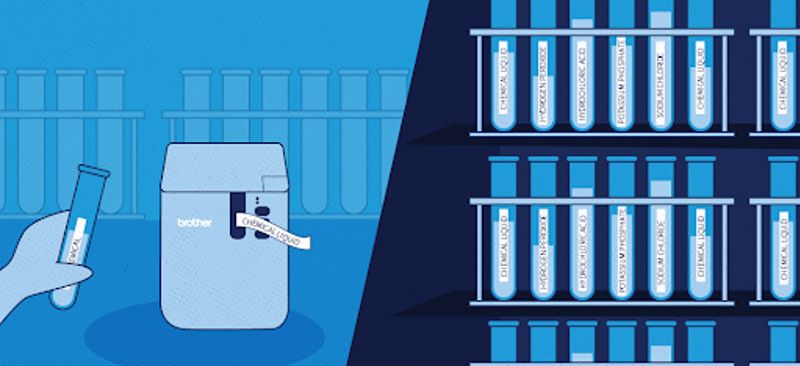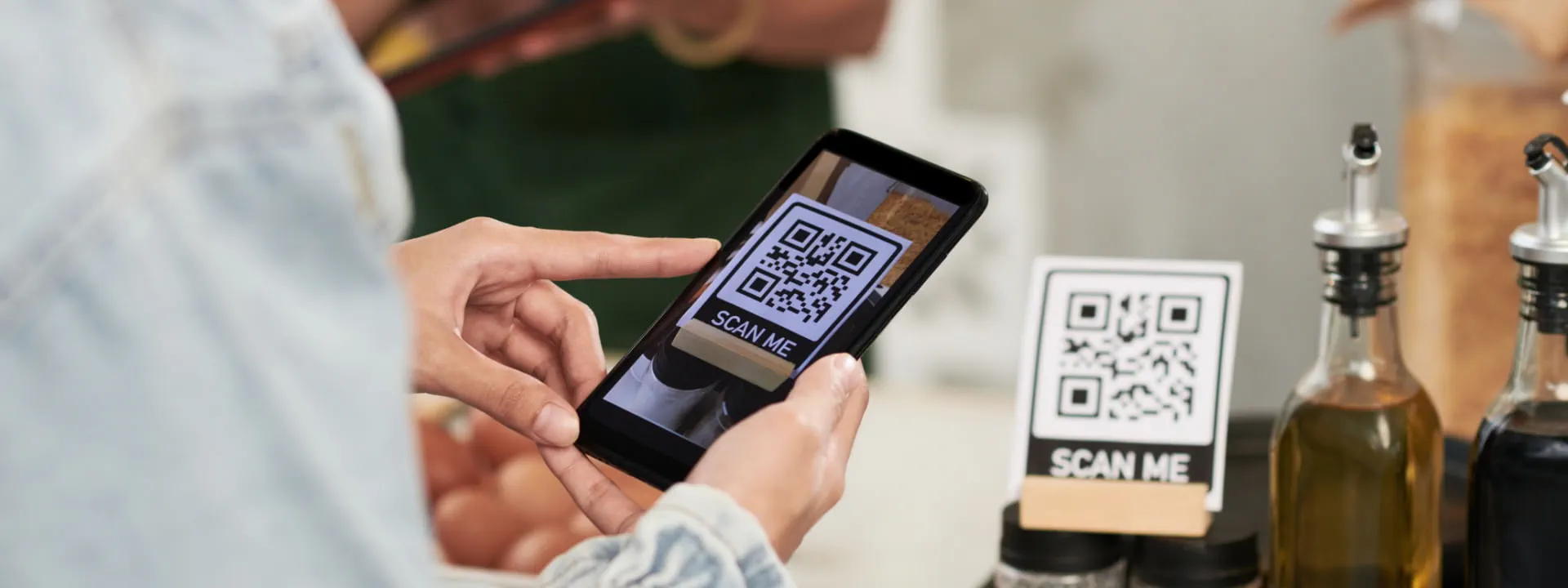
Whether you’re labelling at home or on the job, one of the most important factors you need to consider is durability – especially when it comes to chemicals.
Traditional, run-of-the-mill labels simply don’t stand up against exposure to common chemicals like acetone or xylene. They fade, discolour and deteriorate very quickly, which defeats their purpose and causes additional problems.
To eliminate these pain points and uphold the integrity of your labels, you need a stronger solution. That’s why chemical-resistant labels are the ideal choice for your durable labelling needs.
 Chemical-resistance protects your labels from harsh chemicals and solvents
Chemical-resistance protects your labels from harsh chemicals and solventsHow does a chemical-resistant label work?
Chemical-resistant labelling is made possible by thermal printing technology. There are two different types of thermal print technologies:
- Direct thermal printers: This type of thermal label printer applies heat to material that blackens when applied, without the need for ribbon, ink or toner
- Thermal transfer printers: Thermal transfer printers use wax ribbons or resin-based ink that melts onto the label tape, whether it be paper, plastic or polyester. Some even operate in direct thermal mode (without ribbons) for extra flexibility without the cost of an extra device
Because thermal transfer printing uses polyethylene laminate, the labels they create are able to withstand harsh environments, hazardous chemicals and the regular wear and tear of everyday use. Every label is made with seven additional layers of protective material that render them virtually indestructible against water, temperature and abrasion.
If you’re looking for chemical-resistant labels, thermal transfer printers are the most durable label solution.
How to use a chemical-resistant label: Industry examples
Chemical-resistant labels serve a wide variety of purposes across many industries; all with a need to stay compliant with labelling regulations.
In Australia, all chemical labels are subject to the requirements of the Globally Harmonized System (GHS) of Classification and Labelling of Chemicals. This applies to any chemical manufacturer, supplier, importer or business that uses harsh chemicals in their products or operations. Every label must include information such as product identifiers, precautionary signs and expiration dates (if available).
Here’s how a few different industries are using chemical-resistant labels to mitigate these challenges:
- Healthcare: Laboratory labels affixed to microscope slides are an essential part of tissue extraction, preparation and imaging. Because slides and solvents are frequently used together, this process necessitates chemical-resistant durable labels
- Warehouse and logistics: When transporting harsh chemicals, it’s important that labels be able to withstand constant handling. If containers holding chemicals are jostled or tipped over, they could not only render the label illegible, but also cause harm to those transporting them. This is why it’s vital that their labels be perfectly readable at all times and are resistant to chemical spills
- Retail and hospitality: In retail or food service environments, labels may often be exposed to cleaning supplies, oils and other substances that could render food packaging labels unreadable. By attaching chemical-resistant labels to these items, you can guarantee their contents are fresh, safe and appropriate for the public
3 ways chemical resistance can upgrade your at-home labelling
But what about labelling around the house? There’s plenty of household applications where a durable label solution will come in handy:
- Laundry: Labelling children’s clothes is a good way to ensure they return home with everything they left the house wearing, but detergents and bleach can discolour labels and wear them away. Chemical-resistant labels are designed to withstand solvents without losing colour or deteriorating
- Kitchen: Organising your favourite bottles, lunchboxes and other belongings isn’t easy with so many soaps and oils around the sink, but durable labels won’t deteriorate after they’re washed or exposed to harsh chemicals
- Garage: As the area for cars, motor oils and other greasy chemicals, your garage is the perfect place to try chemical-resistant labelling. They can be attached to batteries, workbenches, tools and used in other hazardous areas that might pose a danger to family or small children
 From soaps to shampoos, households are filled with chemicals that could damage a label
From soaps to shampoos, households are filled with chemicals that could damage a label
How to identify the right label solution
Although there are many label tapes to choose from, here’s what you need to consider to pick the right labels to meet your needs:
- Durability: Your main priority should be identifying a solution that stands the test of time. Not only will this save you time and money replacing worn-down labels, it’ll also help you uphold the purpose behind each label
- Ease of use: The right solution will be easy to design, print and apply as quickly as possible for optimal results
- Customisation: The ability to design and print a custom label is especially important if you want to colour-code or make an important distinction between each application
 The best labelling solutions allow you to easily design and print on the go
The best labelling solutions allow you to easily design and print on the goOur chemical-resistant labels are the ideal labelling solution. Tested against chemicals, water, temperature and abrasion, TZe laminated tape is designed to withstand the harshest conditions. The result? Long-lasting adhesives that never let you down.
To learn more about how our durable label solution can support your labelling needs, contact our team today.





